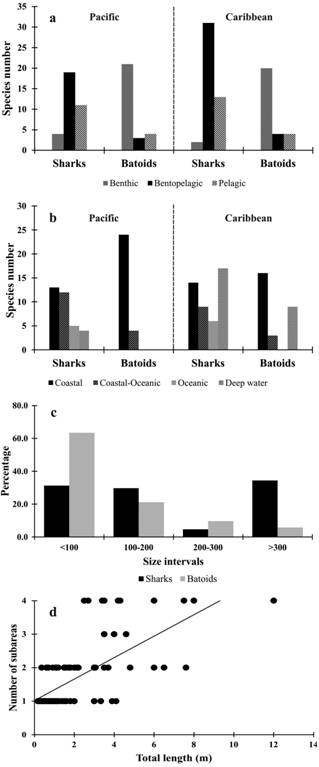ABSTRACT
In order to investigate zoogeographical patterns of the marine elasmobranch species of Colombia, species richness of the Pacific and Caribbean and their subareas (Coastal Pacific, Oceanic Pacific, Coastal Caribbean, Oceanic Caribbean) was analyzed. The areas shared 10 families, 10 genera and 16 species of sharks, and eight families, three genera and four species of batoids. Carcharhinidae had the highest contribution to shark richness, whereas Rajidae and Urotrygonidae had the greatest contribution to batoid richness in the Caribbean and Pacific, respectively. Most elasmobranchs were associated with benthic and coastal habitats. The similarity analysis allowed the identification of five groups of families, which characterize the elasmobranch richness in both areas. Beta diversity indicated that most species turnover occurred between the Coastal Pacific and the two Caribbean subareas. The difference in species richness and composition between areas may be due to vicariant events such as the emergence of the Isthmus of Panama. It is unlikely that the Colombian elasmobranch diversity originated from a single colonization event. Local diversification/speciation, dispersal from the non-tropical regions of the Americas, a Pacific dispersion and an Atlantic dispersion are origin possibilities without any of them excluding the others.
Keywords:
Batoids; Beta diversity; Historical biogeography; Richness; Sharks; Vagility

 Thumbnail
Thumbnail
 Thumbnail
Thumbnail
 Thumbnail
Thumbnail
 Thumbnail
Thumbnail



